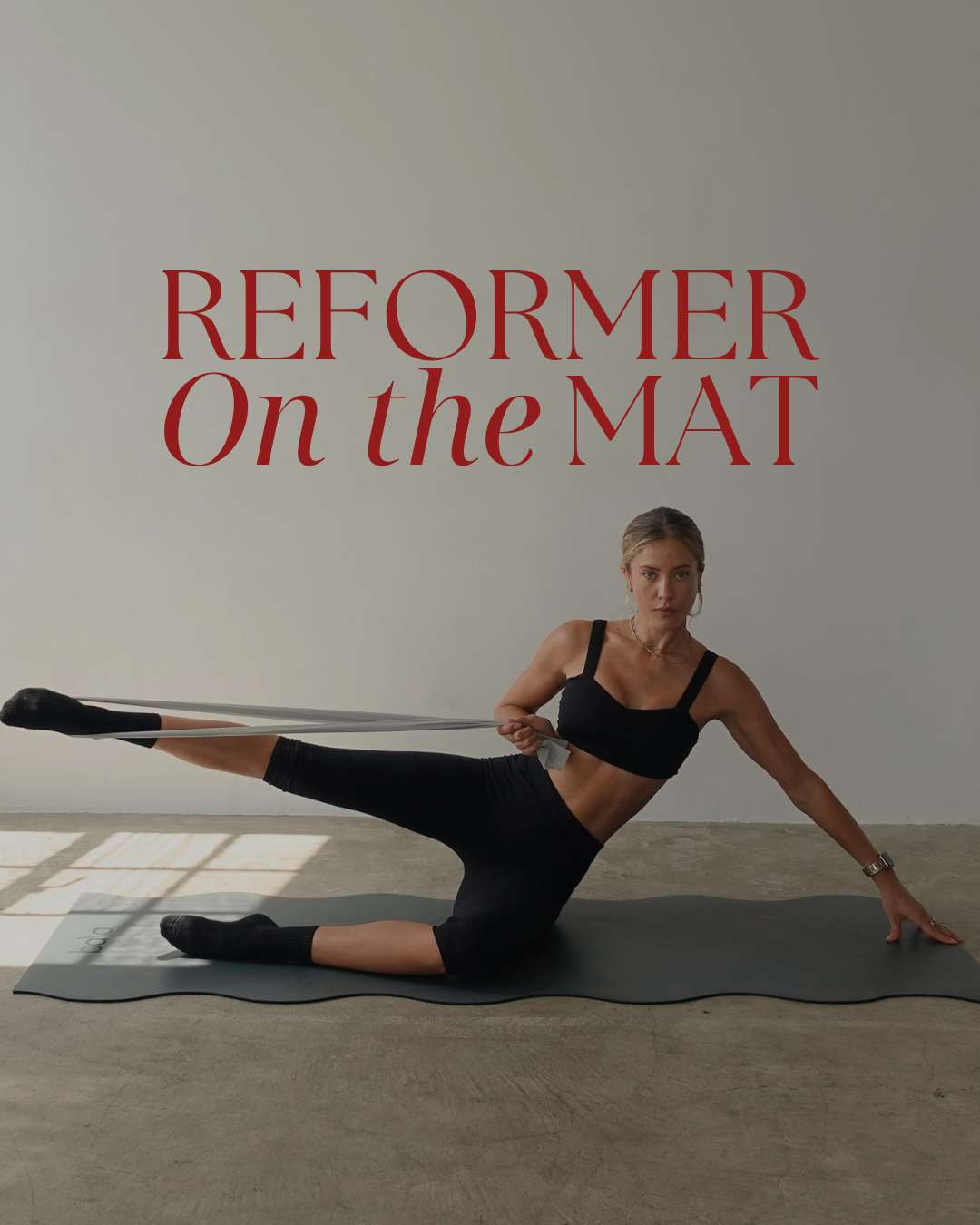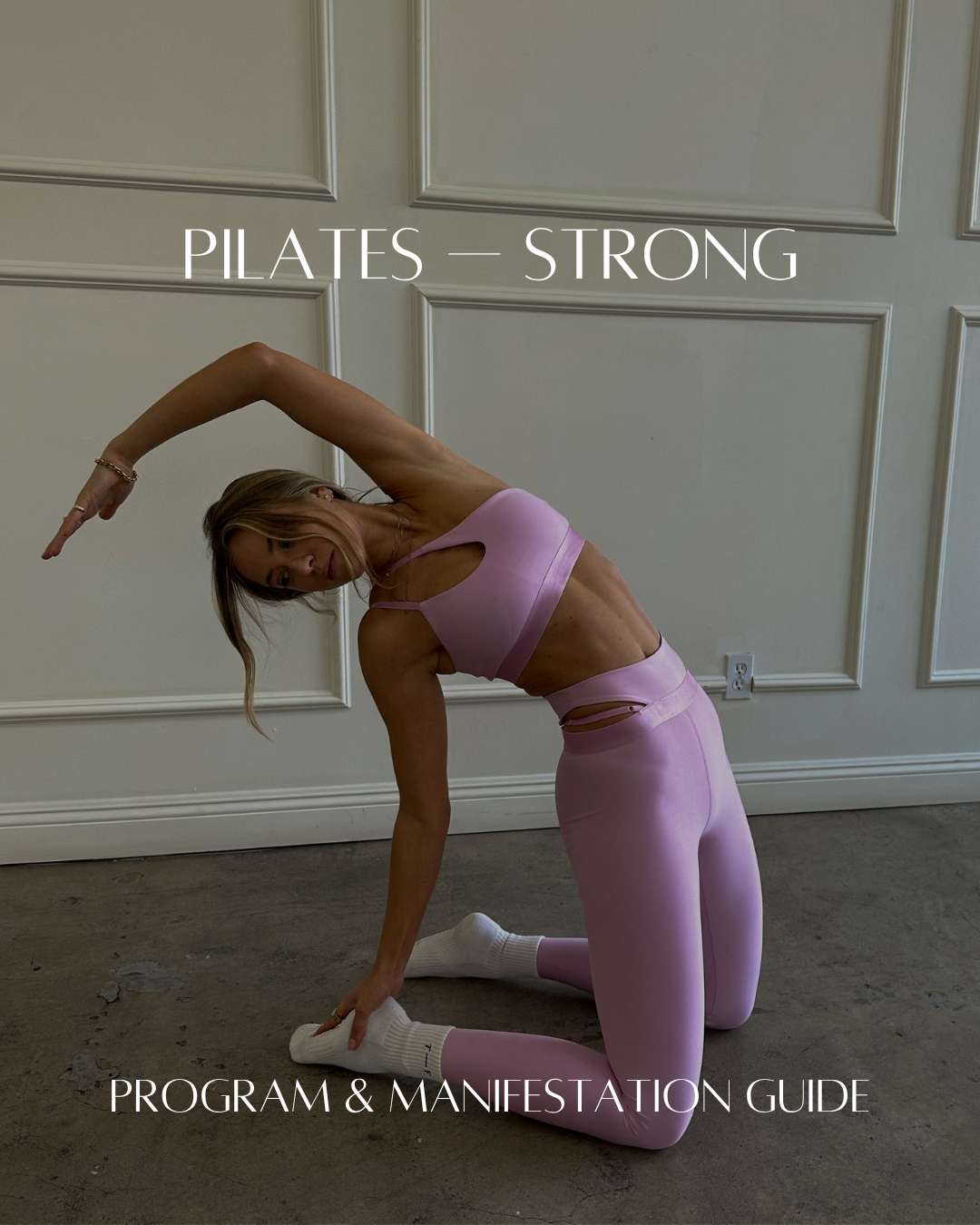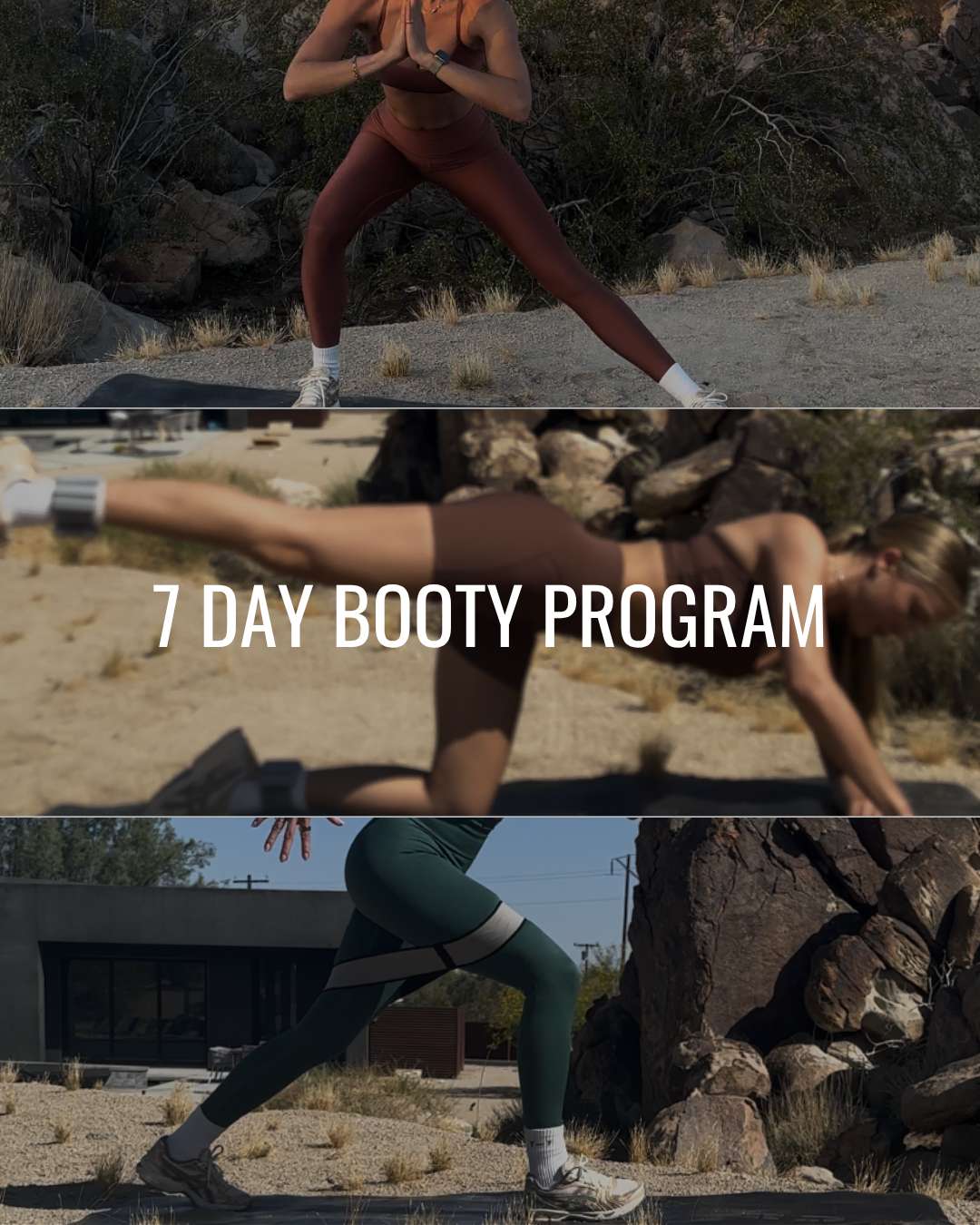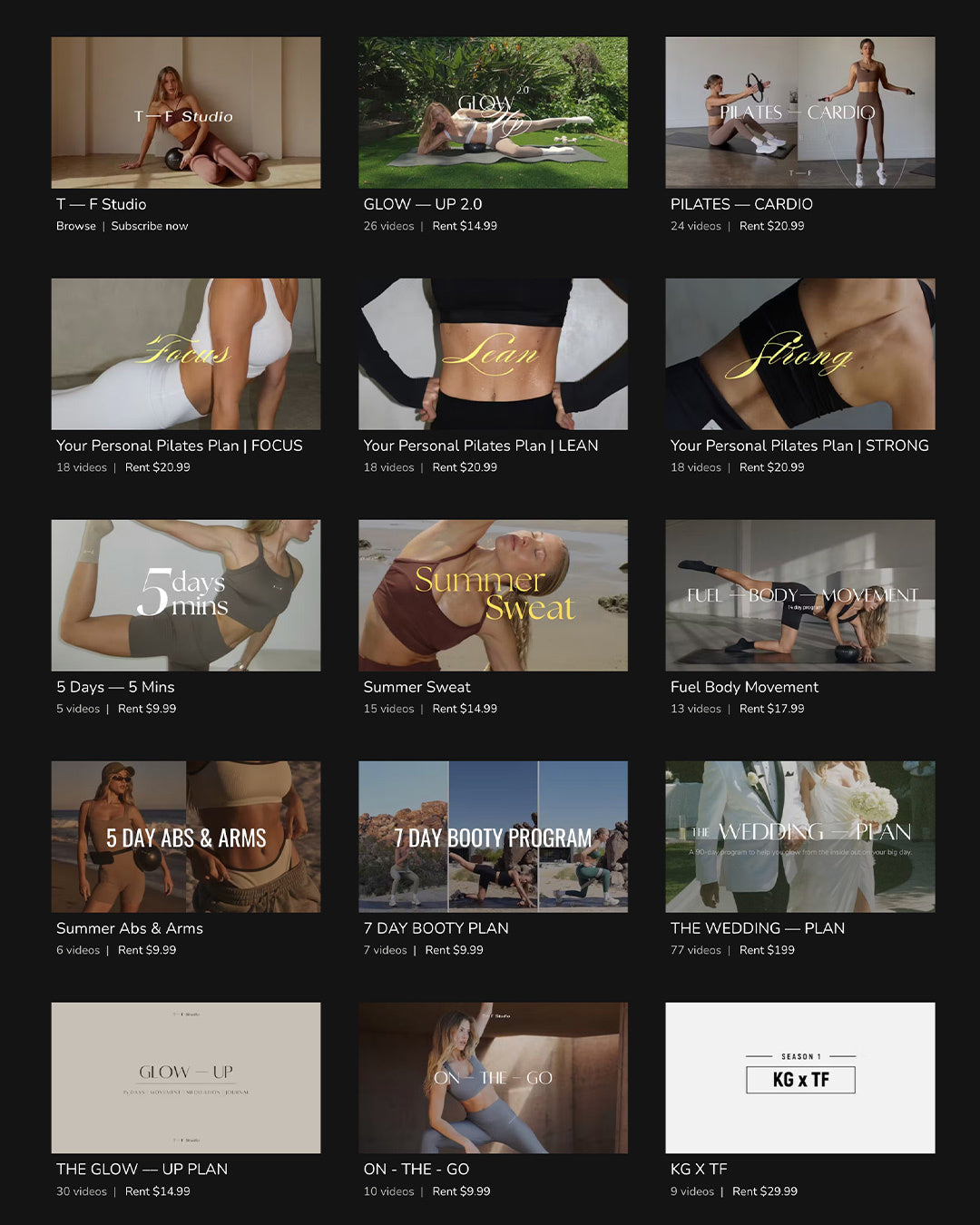I remember when High-Intensity Interval Training (HIIT) first became popular in the early 2010s, and suddenly it felt like the only way to work out. I look back at my relationship with exercise at that time and it shocks me to think about how intense my daily routine was. I was living in London at the time and would wake up at 5:30 a.m., jump on the tube, rush through a dark city, and force myself through a bootcamp session before work - because that’s what I thought would get me the results I was chasing.
Sure, it got my heart rate up and gave me a hit of endorphins, but I never looked forward to it. In fact, I used to hate doing HIIT. It felt punishing, like a box I had to check to prove I was working out hard enough. And still, I kept going. I was desperate and extremely disciplined due to my obsession with getting "in shape". Because like many people, I believed that a workout would only count if I was sore and sweaty. I was under the impression that if I wanted to change my body quickly, HIIT was the answer. But that wasn’t true. It actually made me more tired, inflamed and stressed. I looked and felt my worst during this time, even though I was working out harder than ever before.
These days, more people know that doing HIIT every day isn’t ideal for your body. But when we're craving a shift, when we want to feel something change, it’s easy to fall back on high-intensity movement as the default. After all, it's intense, sweaty, and burns a lot of calories. But more sweat doesn’t always mean more fat loss. It doesn’t mean better results.

If you’ve been doing daily HIIT and wondering why after all that effort, you’re still not feeling or looking your best, here’s why.
The Problem With Daily HIIT
HIIT has its benefits. It’s fast, effective, and can be a great part of your routine. But if it becomes your only form of movement, you might not get the results you’re looking for.
1. It Spikes Stress Hormones
Daily HIIT elevates cortisol: the hormone your body releases during stress. When cortisol stays high, your body holds onto fat (especially around the belly), your sleep suffers, and recovery slows down. In fact, a 2021 study published in the Journal of Sports Sciences found that prolonged HIIT without adequate rest can significantly elevate cortisol levels, contributing to inflammation and fatigue.
2. It Can Interrupt Hormonal Balance
This is really important! Too much high-intensity training can throw off your hormonal rhythm. Your appetite hormones become erratic, recovery hormones (like growth hormone) drop, and your nervous system stays overstimulated. This often leads to cravings, poor sleep, and unexpected weight fluctuations—even when your routine hasn’t changed.
3. It’s Not for Everyone
HIIT isn’t ideal if you’re recovering from an injury, just starting out, or managing certain health conditions. It’s a lot for the body to handle. If your joints are sensitive or you’re still learning to move safely and efficiently, high-impact workouts might cause more harm than good. And let’s be honest—if you hate it, you’re not going to stick with it consistently. Long-term results come from finding a routine that’s sustainable and enjoyable.
3 Simple Fixes for Better Results
You don’t need to stop doing HIIT forever. But balancing your intensity with intention is the key to better results and long-term consistency.
1. Cycle Your HIIT Strategically
HIIT can be effective—but it’s not meant to be done daily. One to two sessions a week is ideal. The rest of your week should include supportive, low-impact movement that helps you recover and build strength without constantly draining your system.
If you’re a woman, syncing your workouts with your menstrual cycle can also make a huge difference to overall energy and results. Working WITH your body instead of AGAINST it. Research shows that the follicular phase (right after your period) is the best time for higher-intensity workouts. You naturally have more energy, strength, and resilience to stress. In contrast, during the luteal phase and the days before your period, your body may crave slower, more nourishing movement.
When you work with your hormones instead of fighting them, you reduce stress, prevent burnout, and feel more empowered in your body.
2. Train for Longevity, Not Just Intensity
Instead of chasing sweat, focus on movement that builds functional strength, supports your posture and alignment, and leaves you feeling energized—not depleted. That’s where the combination with Pilates really shines.
Try mixing up your HIIT workouts by incorporating:
-
Mat-based core work
-
Gentle sculpt classes
-
Controlled, breath-led movements
-
Mind-muscle connection over speed
This kind of movement supports your joints, improves mobility, and keeps your workouts sustainable for years (not just weeks).
3. Let Recovery Be a Non-Negotiable
Progress doesn’t happen in the workout—it happens in the recovery. If you’re always sore, tired, or craving sugar, chances are your body is asking for rest. Prioritize:
-
1–2 rest days per week
-
Quality sleep (7–9 hours)
-
Hydrating, nourishing meals
-
Daily movement that supports your nervous system
When you give your body what it needs, it will give you better energy, performance, and long-term results in return.
What Really Works
Once I started following these 3 fixes, that’s when everything changed. My energy returned, my sleep improved, my body was less inflamed, and for the first time in a long time, I enjoyed moving again.
HIIT can still be a powerful tool when used intentionally. I’ll occasionally bring it back into my routine during phases where I feel strong and energized, and I often combine it with Pilates in our T — F workouts — but it’s not the foundation of my training anymore, and it doesn’t need to be yours either.
Trust me, by incorporating these changes into your routine, you'll feel the difference.
Still figuring out what workouts work best for you?
My 7-Day Pilates Challenge is built to help you reset, reconnect, and reimagine what your workout routine can feel like. It's a 7-day sampler of many different-style workouts we use regularly in our app, so you're bound to find what works best for you!
Put theory into practice by combining low-impact sculpt and mindful mobility with energizing bursts of cardio. Let me know how you feel after!






